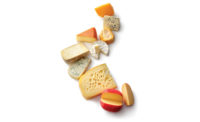The dairy industry is working from a position of strength right now. Here are four observations about the marketing and making of dairy foods and beverages.
Observation 1. Some people don’t like milk. Not you. You obviously like milk. It’s your business. You buy it raw and turn it into beverages, cheese, yogurt and ice cream. But some people don’t like milk and they aren’t shy about sharing their opinions. Blogs, Twitter and Facebook help to amplify their opinions. MilkPEP CEO Julia Kadison calls this crowd the “naysayers.”
It’s one thing to disagree with an opinion, but it’s another thing to spread misinformation. As the man said, “You are entitled to your opinion, but not your facts.” So the Milk Processor Education Program, whose long-time strategy has been to “defend” milk at breakfast, is now playing offense. At the International Dairy Foods Association’s annual Dairy Forum in January, Kadison announced the launch of an initiative that draws on science to debunk alarmist headlines. Along with the scientific community, The Truth About Milk campaign calls in credible third-parties and industry voices to correct misinformation about milk and communicate milk’s nutrient and health benefits.
MilkPEP is calling on milk processors to counter misinformation with these five statements:
- Milk is a nutrient powerhouse – and it’s not just for kids.
- Milk is a real, wholesome and local product from family farms across the nation.
- Milk contains a lot that’s good, without the “bad” that some people think (like excess calories and fat)
- Milk is simple – especially compared to nondairy milks that can have more than 10 ingredients.
- Milk provides high-quality protein (almond and other nondairy milks may have just 1 gram of protein).
MilkPEP is funded by your marketing dollars. Make sure you get your money’s worth.
Observation 2. Dairies have ample silos and tanks to hold raw and pasteurized milk. The processing and packaging equipment is so efficient that many processors can make more food than they can reasonably store. It is a lack of storage space that is limiting their ability to grow.
I’m seeing companies, especially ice cream makers, invest in cold storage warehouses. That’s why Velvet Ice Cream is building a warehouse next to its plant in Utica, Ohio. (See our report in the October 2014 issue.) To continue its growth pattern, Blue Bell Creameries, Brenham, Texas, builds cold storage facilities in new markets. (See page 42 in this issue.) Cheesemaker Westby Cooperative Creamery used to store cheese in refrigerated trailers behind its plant in Westby, Wis. Then it built a three-story refrigerated warehouse and distribution center (September 2013).
If you want to know if a company is growing, ask about its warehouse space.
Observation 3. Besides sticks and bricks, the other investment dairies are making is in automation. In the warehouse, that means robotic palletizers and automated storage and retrieval systems. Besides the obvious savings in payroll and workman’s comp claims from replacing an employee with a robot, there are energy savings. Standing in the cold room at Kroger’s new milk plant in Denver, a manager told me this was a “lights out” operation, explaining there is no need to turn on the lights for a robot that is picking milk cases.
Blue Bell is another dairy investing in automation, “where it makes sense,” said VP of Operations Greg Bridges. Even with machine vision and inspection systems, there is value in having experienced and skilled employees on the plant floor. Labor savings from automation also allows for the hiring of higher-skilled employees.
Observation 4. Notwithstanding the importance of defending milk’s reputation (see MilkPEP’s efforts in my first observation), your marketing and advertising need to depict the joy consumers find in eating what you make. Two brands doing a great job here are Yoplait and Mini Babybel from Bel Brands USA. Find them at iSpot.tv.
One 30-second Yoplait commercial by Saatchi & Saatchi shows families (mom, dad and the kids) raiding the fridge for a yogurt snack. A 15-second spot depicts teenagers fighting over the last cup. The messages I took away from these ads include: yogurt is not just a food for dieting women; yogurt is a snack the entire family can enjoy; and yogurt is a desired alternative to frozen pizza rolls, candy bars and potato chips. And here’s a bonus: the 30-second commercial titled “It’s so good for the whole family” is set to the tune “All Day and All of the Nights” by The Kinks.
In Bel Brand’s “Lunchbox” commercial, a Mini Babybel cheese plays bouncer in front of a lunchbox. Speaking with a French accent, the little waxed-covered disk rejects a string cheese in a see-through wrapper on the grounds of “we have a dress code here.” A candy bar is denied access because the lunchbox is not a Halloween bag. A bag of chips is rejected, too. Finally, the Mini Babybel deems an orange to be worthy (“a natural beauty”) and the two hop into the lunchbox together.
What do yousee happening? Drop me a line.




